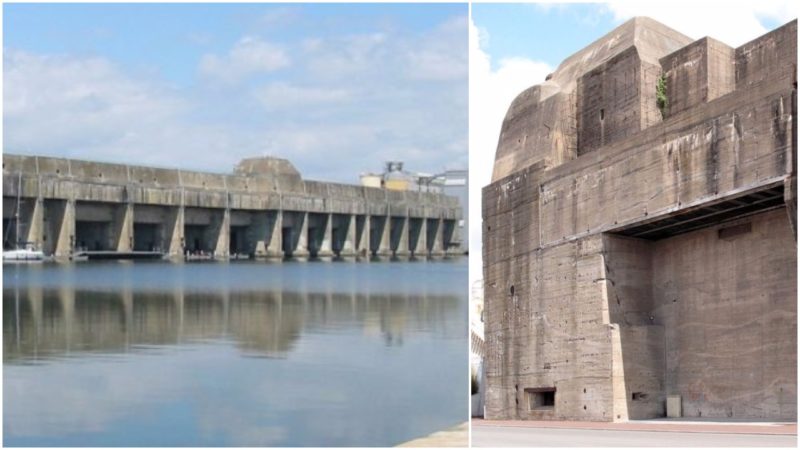The marine base of Saint-Nazaire is a large fortified structure built by the Germans during the Second World War. It was conceived to house and do repairs on U-boats.
However, since it was the largest marine base the Germans had on the Atlantic Ocean, it also served as a repair station for the biggest battleships. During the Third Reich four more marine bases were built in Occupied France.
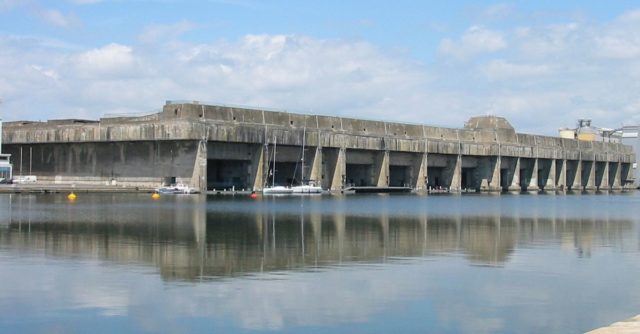
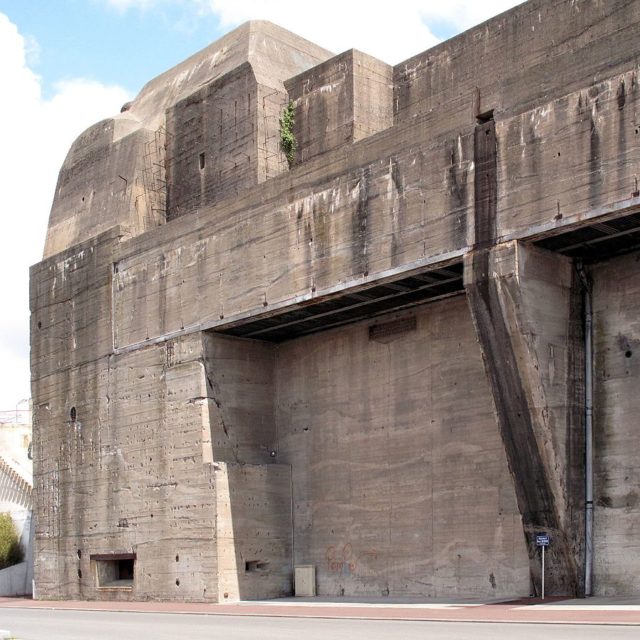
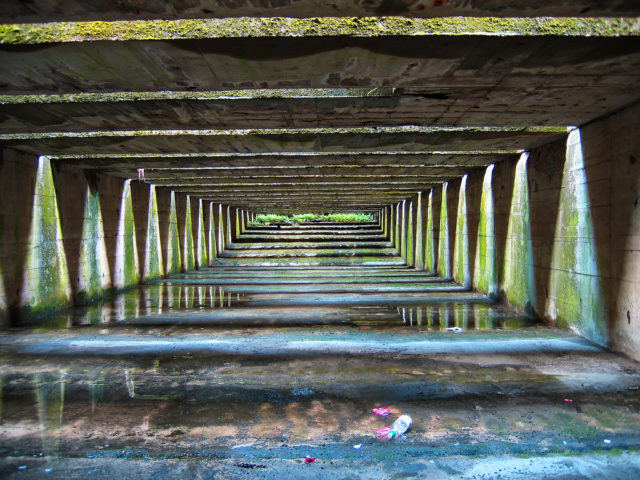
History
Before the Second World War, Saint-Nazaire was one of the largest harbors of the Atlantic coast of France. When the German Army took occupation of Saint-Nazaire during the Battle of France in June 1940, plans were made to turn it into a submarine shelter. By making it invulnerable to air bombings by England, it would be a safe heaven in the Atlantic that the German forces needed to strengthen their position. Work began soon after under the watchful eye of engineer Probst.
Standing 300 meters long, 130 meters wide and 18 meters high, a massive volume of 480,000 cubic meters of concrete was used to in it’s construction. Work began in February 1941 with pens 6, 7 and 8 completed in June 1941. From July 1941 to January 1942 pens 9 to 14 were built and by June 1942 pens 1 through 5 were done. Everything was finished with construction of a flak tower.
One important feature of the Saint-Nazaire base is the construction of it’s roof. It was made 8 meters thick, featuring four layers. The first one is 3.5 meters of concrete, the second is 35 cm granite and concrete layers. The third is a 1.7 meter layer of reinforced concrete and the fourth is a 1.4 meters deep “Fangrost” layer of steel beams. The roof above is filled with anti-aircraft weaponry, machine guns and mortars.
Later, between 1943 and early 1944, a fortified lock was built to protect submarines during their transfer from the Loire river and the pens. The lock is 155 meter long, 25 meter wide and 14 meter high. On top there is one finished and one unfinished M19 Maschinengranatwerfer automatic 5 cm mortar bunker. The roof of the lock also features anti-aircraft armament.
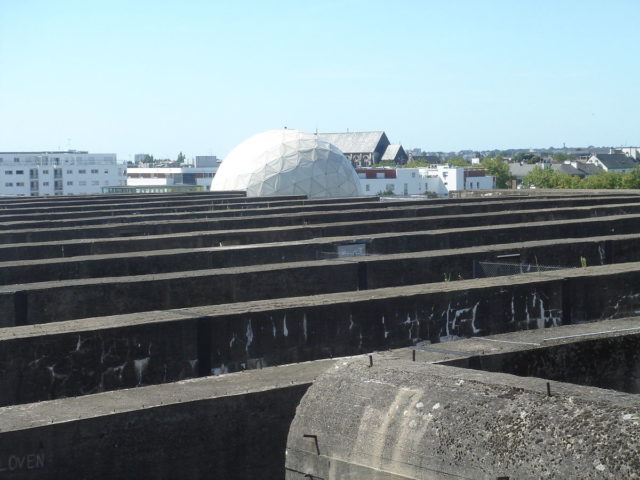
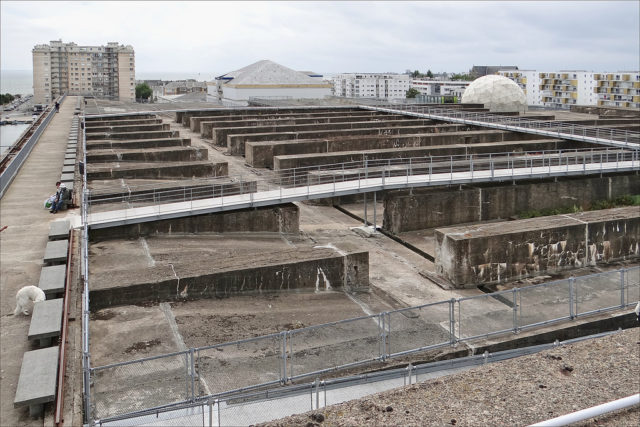
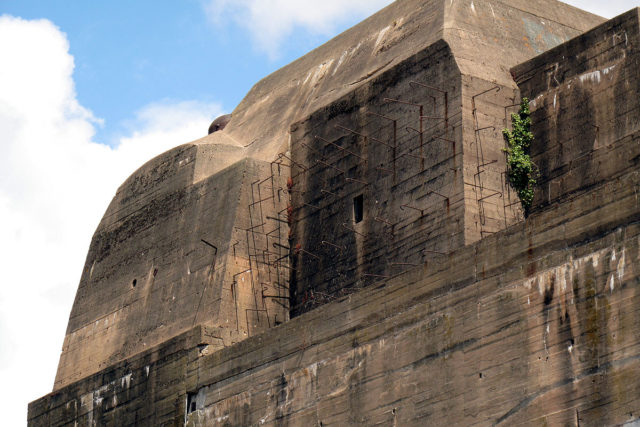
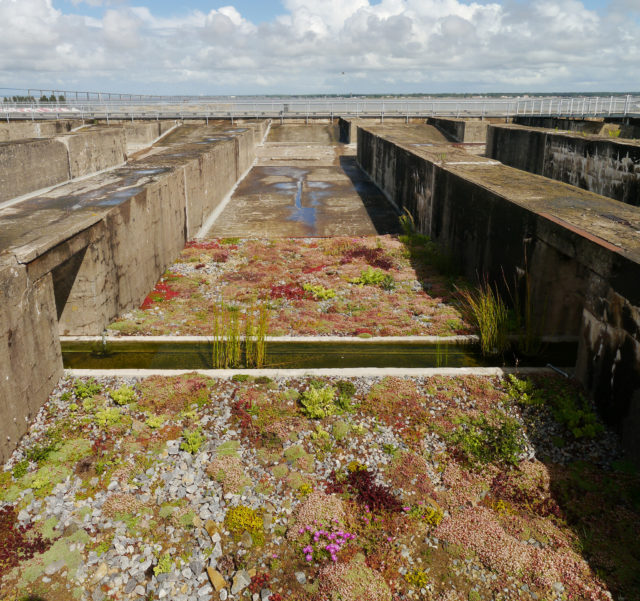
Operation Chariot
Operation Chariot was the name of the British military operation that breached the walls of this massive naval fort. As previous carpet bombarding didn’t do much damage the British came up with a Trojan horse plan to disable this very important safe heaven for German large warships. Since this was the only dry harbour that could accommodate and repair large warships on the Atlantic, it had to be sabotaged.
The operation employed of a great Town class destroyer called HMS Campbeltown which underwent several modifications both resemble a German torpedo boat and to make it fit for the operation. It was filled with an explosive charge consisting of 24 Mark VII depth charges, containing a total of 4.5 short tons (4.1 t) of amatol high explosive.
After it was rammed in the navy port wall, the crew was evacuated under a heavy German fire, leaving the massive ship behind. Even after a close inspection the Germans could not find the explosive hidden in the walls of the ship. An hour and a half later than planned, the ship blew up taking out a huge chunk of the port and rendering it useless until the end of the war. It was finally repaired in 1947.
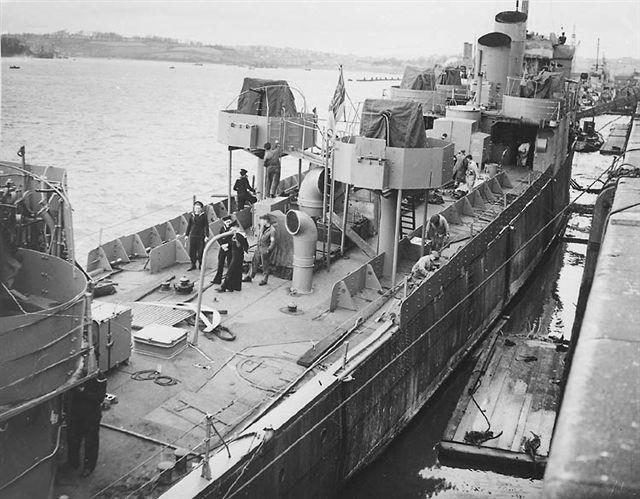

Tourism
The U-boat base lay abandoned for a long time, up until 1994 when the local government of Saint-Nazaire decided to embark on it’s restoration. They named the project Ville-Port (City-Harbour), with plans to feature several museums inside the massive walls of the structure. One of the museums is a replica of the transatlantic passenger liner Escal’Atlantic, which once took travellers from this now rejuvenated French port to Cuba, Mexico and Panama.
